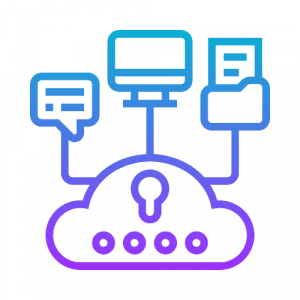Amazon Web Services (AWS) equips businesses with a myriad of tools and guidance to tackle the ever-growing menace of bot traffic on their websites. Web applications face threats from various vectors like cross-site scripting, SQL injection, path traversal, local file inclusion, and distributed denial-of-service (DDoS) attacks.
AWS WAF emerges as a powerful solution, offering meticulously crafted managed rules. These rules act as a shield, providing robust protection against prevalent application vulnerabilities and undesirable web traffic, all without the need for businesses to develop their own rules. The result is a fortified web security posture with minimal implementation hassle.
Understanding the Importance of WAF with CAPTCHA
In the ever-evolving landscape of cyber threats, website and application owners constantly seek robust security measures. One such effective defense mechanism is the integration of a Web Application Firewall (WAF) with CAPTCHA. This combination not only enhances security but also ensures smooth operation and reliability. In this blog, we delve into why WAF with CAPTCHA matters and who stands to benefit the most from its implementation.
1. Shielding Against Bots:
Bots, those automated scripts, are not always benign. They can be programmed to exploit vulnerabilities in websites and applications. Here’s where WAF with CAPTCHA steps in.
Why It’s Important: The primary role of WAF with CAPTCHA is to distinguish between legitimate human traffic and automated bots. By effectively filtering out malicious bots, it prevents them from executing attacks, like SQL injection or cross-site scripting, thus safeguarding your digital assets.
For Whom: This is particularly vital for website owners, developers, and security teams who are focused on maintaining the integrity and security of their web platforms. Whether you run a small blog or a large e-commerce site, protection against bot-driven attacks is paramount.
2. Fighting Unauthorized Access:
Unauthorized access is a looming threat over the digital world, especially with techniques like credential stuffing becoming more common.
Why It’s Important: WAF with CAPTCHA plays a crucial role in defending against unauthorized access attempts. By requiring a CAPTCHA response, it adds an extra layer of security, significantly reducing the risk of automated attacks that exploit stolen credentials.
For Whom: This feature is a boon for online services, financial platforms, and any site that manages user accounts. By fortifying login security, it helps in maintaining user trust and protecting sensitive user data.
3. Safeguarding Service Availability:
In a world where downtime can mean significant financial loss, ensuring service availability is non-negotiable.
Why It’s Important: One of the key benefits of WAF with CAPTCHA is its ability to thwart bots that attempt Distributed Denial-of-Service (DDoS) attacks. By blocking these malicious attempts, it ensures that your website or application remains accessible to legitimate users.
For Whom: This is particularly crucial for businesses that rely on uninterrupted online services. E-commerce platforms, online banking services, and critical infrastructure websites can ill afford downtime, making WAF with CAPTCHA an essential component of their security strategy.
Use AWS WAF CAPTCHA to protect your application against common bot traffic
This blog explores how Amazon Web Services’ (AWS) Web Application Firewall (WAF) enhances web application security through CAPTCHA and Challenge actions. It introduces AWS WAF’s customizable rule sets and then delves into CAPTCHA as a tool for blocking malicious bots. The benefits of CAPTCHA, including bot mitigation and user verification, are highlighted.
The blog also covers the Challenge action, emphasizing its flexibility in tailoring user verification methods. To assist with implementation, a concise step-by-step guide for configuring CAPTCHA and Challenge actions within AWS WAF is provided. By the end, readers gain a clear understanding of how these features fortify web applications, ensuring both security and a seamless user experience.
Step-by-Step Guide to Implementing CAPTCHA Control in AWS WAF WebACLv2
The practical guide in AWS WAF WebACL v2 makes it accessible, emphasizing the importance of user-friendly security. The blog showcases the versatility of WAF with CAPTCHA across industries and encourages a holistic cybersecurity approach covering bot mitigation, user authentication, and overall service reliability.
To assist with implementation, a concise step-by-step guide for configuring CAPTCHA and Challenge actions within AWS WAF is provided.
Architecture Diagram:
Try it Out by Yourself
1.From the AWS Management Console, in the search bar search for WAF and choose WAF & Shield
2. Click web ACL from the side menu and then click Create web ACL
3. Enter a name for the Web ACL and description. The cloud watch metric name is populated with the web ACL name. The next step is to define
4. The next step is to choose the AWS resources to be associated with the Web ACL. In this case, an Application load balancer will be used. Once selected click Add
5. Once added click next
6. Click add rules to start adding the appropriate rules. We will use both AWS Managed rules groups and Add my own rules and rule groups
In this case, the add managed rule groups will be used
7. Click on the AWS managed rule groups and in this case choose SQL Database from the free rule groups and click to Add to web ACL and click Add rules
8. The next step is to create a custom rule
9. Choose the request criteria which will be used in our case matches the statement will be used
10. The setup is to choose the Inspect statement needed
11. For example to allow or block a particular country choose the option Originate from a countryin
12. if this option is chosen you need to choose how the country origin is determined whether it is the source IP or the IP address in the header
If the IP address in the header is used, you need to define the Header and the fallback in the case there is no X-forwarded-for header
13. The next step is to choose the action required whether allowed, blocked, count or CAPTCHA. In this case CAPTCHA is selected
14. If needed, the default CAPTCHA token timer of 300 seconds can be modified
15. Click add rule to add the custom rule to the web ACL
16. The next setup is to to Choose the default web ACL action that will be used if no rules are matched and click next
17. If needed change the rule priority by selecting the rule needed to be moved and choose Move up or down and then click next
18. The Enabled Sampled requests are needed and should be left enabled to view the request matching the web ACL rules and click then next to continue
19. The last step is to review the settings and click create web acl. If needed click on the edit button to modify the settings again
In the case of failed requests, the CAPTCHA check is presented in the browser. In our case, we need to solve the puzzle
Conclusion
In summary, this blog highlights the critical role of integrating CAPTCHA with AWS WAF for robust web application security. It covers the setup process, including the configuration of customizable rule sets within the AWS environment, and delves into the specifics of enabling CAPTCHA to efficiently distinguish between legitimate users and automated traffic. By following this guide, you’ll gain the knowledge to effectively deploy CAPTCHA within your AWS WAF setup, thereby enhancing your site’s security posture and ensuring a safer user experience.
References
For further reading and understanding, you may refer to the following resource:
If you have any questions or suggestions, please reach out to us at contactus@1cloudhub.com
Written By:
Umashankar N
Chief Technology Officer (CTO) and AWS Ambassador
Srihari S
Cloud Solutions Architect -II | 3x AWS Certified | 2x Azure Certified



